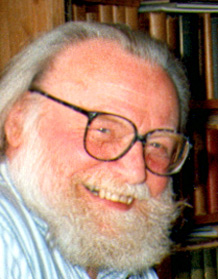Art and design historian, typographer, illustrator, designer, exhibition curator, critic and political activist, Ray Watkinson was most widely recognised for his work on socialist and designer William Morris coming to Brighton College of Art during a decade that witnessed the radical reshaping of art and design education.

During his career as an art and design historian, typographer, illustrator, designer, exhibition curator, critic and political activist, Ray Watkinson was most widely recognised for his work on socialist and designer William Morris. The latter was pivotal for Watkinson who helped establish the William Morris Society in 1955, edit its journal and become President in 1991. His enthusiasm and scholarship led to Trusteeships of the William Morris Gallery, Walthamstow, and of two key locations for Morris’s design activities: Kelmscott House, Hammersmith, and the Red House, Bexleyheath. Watkinson’s major books included William Morris as Designer (1967) and Pre-Raphaelite Art and Design (1970).
Manchester born Watkinson attended Stretford Grammar School and Manchester School of Art. Throughout his career he was politically active, whether participating in workers’ theatre, campaigning for Aid for Spain in the 1930s, writing as art critic of the Daily Worker, being a member of the Communist Party’s Hogarth Club or, somewhat later, becoming Chair of the Marx Memorial Library. His membership of the Communist Party lasted throughout his working life.
After a period of the Second World War as a technical draughtsman in the Avro aircraft factory in Manchester, Watkinson continued to produce artwork for the Communist Party in the post-war years, as he had in the 1930s. He comfortably combined political commitment with research and wider cultural dissemination as evidenced by publication of an essay on illustrator and supporter of Radicalism, Thomas Bewick, for the Communist Party’s series Our History in 1962 and a subsequent public lecture on Bewick as part of Brighton College of Art’s contribution to the first Brighton Festival in 1967.
Following other academic posts, Ray Watkinson came Brighton College of Art as an art historian during the 1960s, a decade that witnessed the radical reshaping of art and design education under the influence of Summerson and Coldstream and the student occupation of 1968. His extra-curricular activities included trips with groups of Brighton students to attend the Communist Art School in London. He was involved in the art student sit-ins at Hornsey, Guildford and Brighton in 1968 and, following his resignation in 1969, worked at the London College of Printing and Goldsmith’s College where he became Deputy-Dean.
For many decades until his death, he lived in Brighton in a three-storey terraced house jam-packed with books from top to bottom. This unique personal scholarly Library was bequeathed to the University of Brighton where it is held as the Ray Watkinson Collection.